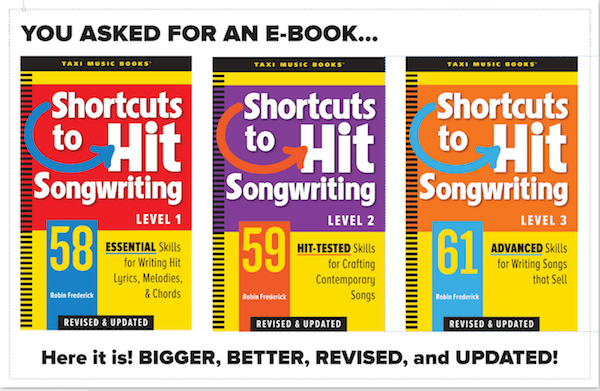
Here it is… in three eBooks! The new edition of Shortcuts to Hit Songwriting is finally a reality. All the Shortcuts from the first edition are expanded and updated with the latest hit song examples, plus new Shortcuts covering today’s must-have songwriting tools.
There’s so much information, I needed three e-books to cover all 178 song crafting techniques. Read a book from beginning to end or bounce around looking for just the tool you need to turn your new chorus into a hit. You can put every Shortcut to use the minute you start working on a song. Check out all three books on Amazon where you can see the complete Table of Contents and download a free sample.



 Imagine yourself…
Imagine yourself…
